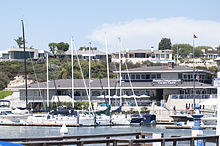아르테미스 3
Artemis 3 아르테미스 3세 임무 계획 요약 | |
| 이름 | 탐사 미션 3 (2017-2019) |
|---|---|
| 미션 타입 | 유인 달 착륙 |
| 교환입니다. | NASA |
| COSPAR ID | |
| 미션 기간 | 최대 30일 |
| 우주선 속성 | |
| 우주선 | 오리온 004 스타십 HLS |
| 제조원 | |
| 임무 개시 | |
| 발매일 | 2025년 (예정) |
| 로켓 | SLS 블록 1(오리온) |
| 발사장소 | 케네디 우주 센터, LC-39B |
| 청부업자 | NASA |
| 임무 종료 | |
| 착륙 지점 | 태평양(예정) |
| 달 착륙선 | |
| 착륙 지점 | 남극 지역 |
Artemis 3호(공식적으로 Artemis III)[6]는 Artemis 프로그램의 첫 번째 승무원 달 착륙 미션과 Starship HLS [7]착륙선의 첫 번째 승무원 비행으로 계획되어 있다.2025년에 발사될 예정인 아르테미스 3호는 1972년 [4]아폴로 17호 이후 두 번째 유인 달 착륙이 될 예정이다.
개요
아르테미스 3호의 계획은 달의 남극 [8]지역에 승무원을 착륙시키는 것이다.달 표면에는 약 [9]1주일 동안 두 명의 우주 비행사가 있을 예정이다.이 임무는 여성을 [10]달에 최초로 착륙시키는 것이다.최대 4명의 우주인들이 오리온 MPCV를 타고 지구를 떠나지만, 인간착륙시스템(HLS)을 탑재한 지상 임무는 6.5일 동안 표면에 머무를 두 명의 승무원으로 구성될 것이다.나머지 우주인들은 오리온호에 머물 예정이다.두 우주인은 달 표면에서 최대 4번의 우주 유영을 할 것이며, 물 얼음 채취를 포함한 다양한 과학적 관찰을 할 것이다.Artemis III 착륙에 앞서, 일부 추가 장비가 표면에 미리 배치될 것입니다. 여기에는 우주비행사들이 달 여행 중에 사용할 수 있는 압축되지 않은 탐사선도 포함됩니다.이 로버에는 원격으로 제어할 수 있는 기능이 있습니다.5~[11]15km(3.1~9.3mi)의 짧은 거리를 주행하면 영구적으로 그늘이 지는 여러 영역에 도달할 수 있습니다.
우주선
우주발사시스템
우주발사시스템은 지구에서 달 궤도로 오리온 우주선을 발사하는 데 사용되는 초강력 로켓이다.
오리온자리
오리온은 모든 아르테미스 승무원들이 사용하는 승무원 수송 차량이다.그것은 승무원들을 지구에서 게이트웨이 궤도로 이송하고 지구로 돌려보낼 것이다.
게이트웨이
게이트웨이는 Artemis 3 임무 이전에 NRHO(근직선 후광 궤도)에 설치되는 작은 모듈러 우주 정거장입니다.HLS와 오리온 모두 승무원 이동을 위해 게이트웨이에 도킹할 예정입니다.가능한 스케줄 슬립의 영향을 줄이기 위해 Artemis 3 미션은 게이트웨이에 의존하지 않습니다.게이트웨이를 사용할 수 없는 경우, 우주 비행사는 오리온에서 HLS로 직접 환승합니다.
스타십 HLS
2021년 4월 16일, NASA는 Artemis 3 임무에 사용하기 위해 승무원들이 도착하기 전에 우주선의 HLS를 개발하고 게이트웨이 궤도에 전달하기 위해 스페이스X를 선택했습니다.인도에는 NRHO를 활성화하기 전에 저지구궤도(LEO)에서 우주선 HLS를 재급유해야 하며, 이 재급유에는 복수의 유조선 [12]비행으로 채워진 LEO에 사전 배치된 추진제 저장소가 필요하다.우주인 2명이 오리온에서 우주왕복선 HLS로 옮겨 달 표면으로 내려와 며칠간 버틴 뒤 오리온으로 귀환한다.
발전
2017년 12월 트럼프 행정부의 우주 정책 지침 1이 비준되자, 오리온 다목적 승무원 차량(MPCV)과 달 궤도에 있는 우주 정거장을 이용한 유인 달 캠페인이 시작되었다.원래 탐사 임무-3으로 명명된 이 임무의 목표는 네 명의 우주 비행사를 달 주변의 거의 직선의 후광 궤도로 보내고 [13]ESPRIT와 미국 이용 모듈을 게이트웨이라고 알려진 달 우주 정거장에 전달하는 것이었다.그러나 2019년 5월, ESPRIT와 미국 Utilization Module(현재는 HALO로 불림)은 상업용 발사체로 개별적으로 비행하도록 재측정되었다.현재 청구된 대로 Artemis 3는 2024년 말까지 Artemis 프로그램의 첫 유인 달 착륙을 가속화하기 위해 용도 변경되었으며, 오리온 MPCV는 오직 전력과 추진 요소 그리고 상업적으로 가공된 달 랜이 부착된 작은 서식지/도킹 노드로만 구성된 최소한의 게이트웨이와 랑데부하는 것을 볼 수 있었습니다.인간 착륙 시스템(HLS)[14]으로 알려져 있습니다.
2020년 초까지, 오리온과 HLS가 게이트웨이와 랑데부하는 계획은 오리온과 HLS의 단독 시연과 Artemis [15][16]프로그램으로부터 독립된 게이트웨이의 개발을 위해 포기되었다.
2021년 8월 10일, 감사관실은 우주복이 빠르면 2025년 4월에나 준비될 것이라는 결론을 보고했으며, 이는 2024년 말 발사 [17]예정일에서 임무가 지연될 가능성이 높다.
2021년 11월 9일, NASA의 빌 넬슨 행정관은 아르테미스 III가 2025년 [4]이전에 개최될 것이라고 확인했다.
레퍼런스
- ^ Gebhardt, Chris (22 September 2017). "SLS EM-1 and EM-2 launch dates realign; EM-3 gains notional mission outline". NASASpaceFlight.com. Archived from the original on 2 October 2017. Retrieved 23 September 2017.
- ^ Berger, Eric (16 April 2021). "NASA selects SpaceX as its sole provider for a lunar lander - "We looked at what's the best value to the government"". Ars Technica. Archived from the original on 17 April 2021. Retrieved 17 April 2021.
- ^ Brown, Katherine (16 April 2021). "As Artemis Moves Forward, NASA Picks SpaceX to Land Next Americans on Moon". NASA. Archived from the original on 16 April 2021. Retrieved 17 April 2021.
 이 문서에는 퍼블릭 도메인에 있는 이 소스로부터의 텍스트가 포함되어 있습니다..
이 문서에는 퍼블릭 도메인에 있는 이 소스로부터의 텍스트가 포함되어 있습니다.. - ^ a b c Foust, Jeff (9 November 2021). "NASA delays human lunar landing to at least 2025". SpaceNews. Retrieved 9 November 2021.
- ^ Loff, Sarah (16 October 2019). "NASA Commits to Future Artemis Missions With More SLS Rocket Stages". NASA. Archived from the original on 20 January 2021. Retrieved 16 October 2019.
 이 문서에는 퍼블릭 도메인에 있는 이 소스로부터의 텍스트가 포함되어 있습니다..
이 문서에는 퍼블릭 도메인에 있는 이 소스로부터의 텍스트가 포함되어 있습니다.. - ^ Artemis : brand book (Report). Washington, D.C.: NASA. 2019. NP-2019-07-2735-HQ.
MISSION NAMING CONVENTION. While Apollo mission patches used numbers and roman numerals throughout the program, Artemis mission names will use a roman numeral convention.
- ^ Potter, Sean (23 March 2022). "NASA Provides Update to Astronaut Moon Lander Plans Under Artemis". NASA. Retrieved 23 March 2022.
- ^ Chang, Kenneth (25 May 2019). "For Artemis Mission to Moon, NASA Seeks to Add Billions to Budget". The New York Times. Archived from the original on 25 May 2019. Retrieved 25 May 2019.
Under the NASA plan, a mission to land on the Moon would take place during the third launch of the Space Launch System. Astronauts, including the first woman to walk on the Moon, Jim Bridenstine said, would first stop at the orbiting lunar outpost. They would then take a lander to the surface near its south pole, where frozen water exists within the craters.
- ^ Foust, Jeff (21 July 2019). "NASA outlines plans for lunar lander development through commercial partnerships". SpaceNews. Archived from the original on 1 October 2021. Retrieved 17 July 2020.
- ^ "NASA unveils schedule for 'Artemis' 2024 Moon mission". France24. 23 May 2019. Archived from the original on 1 December 2020. Retrieved 21 July 2019.
- ^ Berger, Eric (29 October 2019). "NASA shares details of lunar surface missions—and they're pretty cool". Ars Technica. Archived from the original on 30 March 2021. Retrieved 17 July 2020.
- ^ https://ntrs.nasa.gov/api/citations/20220003725/downloads/22%203%207%20Kent%20IEEE%20paper.pdf[베어 URL PDF]
- ^ Sloss, Philip (4 December 2017). "NASA evaluates EM-2 launch options for Deep Space Gateway PPE". NASASpaceFlight.com. Archived from the original on 9 August 2019. Retrieved 2 March 2018.
- ^ Grush, Loren (17 May 2019). "NASA administrator on new Moon plan: "We're doing this in a way that's never been done before"". The Verge. Archived from the original on 4 July 2020. Retrieved 17 July 2020.
- ^ Gohd, Chelsea (16 March 2020). "NASA's "critical path" to the Moon no longer requires a lunar Gateway: Report". Space.com. Archived from the original on 16 May 2020. Retrieved 16 May 2020.
NASA has removed the Lunar Gateway from its "critical path" to return humans to the Moon by 2024, according to a SpaceNews report.
- ^ Foust, Jeff (14 May 2020). "NASA refines plans for launching Gateway and other Artemis elements". SpaceNews. Archived from the original on 16 May 2020. Retrieved 16 May 2020.
... Loverro reiterated previous statements that the Gateway will not be used for the Artemis 3 mission that will attempt to land humans on the Moon to "make that mission have a higher probability of success"
- ^ "NASA's development of next-generation spacesuits" (PDF). 10 August 2021. Archived (PDF) from the original on 10 August 2021. Retrieved 10 August 2021.
... the suits would not be ready for flight until April 2025 at the earliest ... a lunar landing in late 2024 as NASA currently plans is not feasible.
외부 링크
- 오리온 웹사이트 nasa.gov
- Space Launch System 웹사이트(nasa.gov)





